COVID-19 Imposed Inequitable Hardships on People of Color and Younger Adults, Latest Public Opinion Poll Reveals
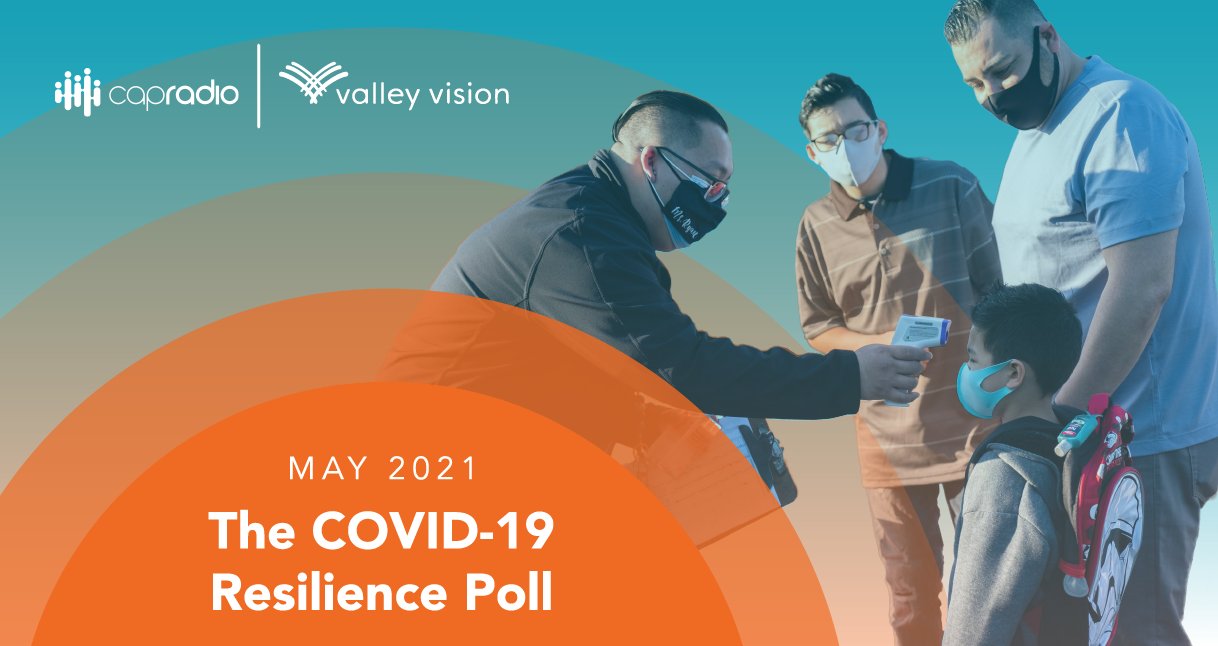
Sacramento, CA – May 10, 2021: Three public opinion polls fielded through a year of the COVID-19 pandemic from May 2020 to March 2021 revealed that the health crisis had a significant impact on the financial and emotional well-being for many. Communities of color, those earning less, and those who are younger, have been more severely impacted than others, experiencing greater income loss, more difficulty affording basic necessities, and deeper fears and concerns about financial security and mental health.
Valley Vision and CapRadio released today the third and final COVID-19 Resilience Poll, which was fielded by the Institute of Social Research (ISR) at Sacramento State between March 12-29, 2021. The research is demographically representative of the Capital region, encompassing Sacramento, El Dorado, Placer, Sutter, Yolo, and Yuba counties, with a margin of error of +/- three percent.
“The latest report highlights clear themes that emerged from polling over a year of the pandemic.” said Valley Vision CEO Evan Schmidt. “The impact is expected to be felt for years to come and will likely signify historic shifts in our social, political, and economic landscape. The findings point to the unique challenges our region now faces and where we most need to focus system change to build an equitable recovery.”
The research findings show the greatest hardships were felt by vulnerable communities. In the most recent poll, 41% of respondents overall reported a loss of income during the pandemic. For Black, Hispanic, and Asian/NHPI respondents, that number is much higher.
“The three surveys in the past year make it clear that vulnerable communities feel even more vulnerable because of the pandemic,” said Nick Miller, managing editor of news and information at CapRadio. “Our journalists will be looking deeply at these issues on CapRadio this week.”
These findings are consistent with what is taking place across the United States. A study conducted by the Pew Research Center in April 2020 found that 26% of middle-income adults and 53% of lower income adults could not pay their bills in full that month. Only 23% of lower income adults and 48% of middle-income adults reported having “rainy day funds” that would cover expenses for three months in case of an emergency, compared to 75% of higher income adults.
“In addition to the toll taken on lives, overall well-being, and jobs, one constant throughout the pandemic has been the rapid-response system transformation,” Schmidt said. “Valley Vision and CapRadio publicize these findings to help local leaders shape future social, civic, and economic structures to help make all of our communities inclusive, supported, safe, and equitable.”
TOP COVID-19 RESILIENCE POLL LEAD FINDINGS:
Financial hardship: Communities of color, those earning less, and those who are younger experienced greater income loss, more difficulty affording basic necessities, and deeper fears and concerns about financial security.
- 54 to 61%of those with significantly reduced income couldn’t afford an adequate food supply throughout the year.
- 59 to 68% said they couldn’t afford rent or mortgage.
- 39 to 47% of 18- to 39-year-olds said they couldn’t afford to pay down debt.
Workplace: The circumstances of the pandemic spurred a seemingly ten-year acceleration of new workplace trends toward remote work, automation, and e-commerce.
- The percent of people who work from home either part or full time shot up from 38% prior to the pandemic to 70% during the pandemic.
- 78% said they want to work at home at least one day a week; 28% said that they want to work at home full time.
- By larger margins, 18- to 38-year-olds believe the pandemic has made them less employable due to concerns over availability of jobs, changes in their industry, and their skillset.
Mental and Emotional: The pandemic created significant increases in depression, anxiety and stress, concerns about substance use, and concerns about physical and emotional violence at home.
- The likelihood of experiencing stress or anxiety, or depression or hopelessness decreased as income level increased.
- 92% of Hispanic respondents reported feelings of stress or anxiety at least one day in the last seven days, followed by 85% of Asian/NHPI respondents, and 82% of Black respondents.
- Respondents who are white were least likely to have experienced these feelings (52%).
Education: A year of educating from home has been difficult on parents, students and teachers, with more than two-thirds of parents reporting concerns about their children falling behind academically.
- In May 2021, 79% of those with children said they were doing some kind of remote learning.
- 54% of parents were more likely to have lost income, compared to 34% of non-parents.
- 71% of parents reported being concerned about their ability to handle other responsibilities.
- 69% of parents said having children in school partly or fully remotely was negatively affected their ability to do their job.
Beyond COVID-19: The last poll found that vaccination skepticism is likely to impact our region, with 39% of respondents stating that they would probably not or definitely not get a COVID-19 vaccination when it becomes available to them.
- Black respondents were significantly more skeptical than other race/ethnicities, with 65% reporting they probably or definitely would not get a vaccine, compared to 44% of white, 29% of Hispanic, and 15% of Asian/NHPI respondents.
- 71% of respondents reported knowing someone who had COVID-19.
###
About the Polling Series Valley Vision and CapRadio, in partnership with the Institute of Social Research (ISR) at Sacramento State, conduct research via scientifically administered surveys of area resident attitudes. The survey data inform policy-makers and stakeholders on key regional issues by providing on-the-ground public engagement data. The approach used is highly effective and unique by establishing a scientifically valid and demographically representative panel of regional residents that reflects a microcosm of the region as a whole. The panel size is consistently about 2,000 people from six counties – Sacramento, Yolo, El Dorado, Placer, Yuba, and Sutter. The panel is weighted to demographically represent the region and each survey achieves a statistical valid margin of error of not more than +/- 3%.
About Valley Vision For more than 25 years Valley Vision has used research to help governments, businesses, foundations and community groups better understand the issues facing our region. We believe that knowing and understanding the facts is the best way to establish a common working foundation for collaborative problem-solving. That’s why Valley Vision conducts, produces and interprets research including scientific public opinion polls, focus groups, community needs assessments, best practice studies and other research tools to bring to light the information local leaders need to improve our communities.
About Sacramento State’s Institute for Social Research ISR supports community partners in improving programs and policies in the region and throughout the state. Located at the university’s downtown location, the Institute offers a broad range of expertise conducting surveys and applied research. Since 1989, our collaborations with government agencies and nonprofit organizations have contributed to public accountability, program fidelity, and the strengthening of communities.
About CapRadio CapRadioserves California’s Capital Region, Central Valley and Sierra Nevada as the public-supported alternative to for-profit media. As the NPR-member station based in Sacramento, CapRadio connects with communities through seven broadcast stations, live streaming, podcasts, digital communities, live experiences and more. Known for its award-winning newsroom, CapRadio is recognized as a leader in community-engaged journalism and state government reporting, and CapRadio Music is the exclusive broadcast source of classical and jazz in the region. With more than 500,000 weekly listeners on-air and online, CapRadio provides a trusted and indispensable source of information, music and events.
Capital Region Workforce Boards Champion Digital Inclusion

The Capital Region’s four workforce boards recognize the digital divide must be addressed in order to support inclusive job growth and social mobility for our region’s workers. In response, they have provided a significant investment in the Sacramento Coalition for Digital Inclusion’s (Coalition) efforts to address digital skills, technology access, and broadband infrastructure and affordability needs. The Capital Region Workforce Boards include SETA/Sacramento Works, Golden Sierra Job Training Agency, YoloWorks and North Central Counties Consortium. According to Roy Kim, Deputy Director of SETA/Sacramento Works, “Digital skills have become part of the basket of basic skills that job seekers need to obtain employment and advance along a career pathway.” The funding provided will support the effort to sustain, implement and expand the Coalition’s work to ensure traditionally underserved community members receive access, devices and skill building resources to participate in our increasingly digital world.
Valley Vision is actively working to close the digital divide in the Capital region. The Coalition, managed by Valley Vision, recently completed a 2021 Action Plan as a roadmap to advance and expand digital inclusion in three core areas: broadband access and adoption, hardware devices, and digital literacy and skills. Valley Vision also manages the Connected Capital Area Broadband Consortium, connecting the region’s underserved households with high speed broadband infrastructure. By addressing needs in infrastructure, affordability, technology access, and digital skills, our region is taking a comprehensive approach to closing the digital divide – recognizing that these pillars are co-equal in addressing economic and educational inequity.
The Coalition was founded as a response to the 2018 Brookings Institution economic assessment, commissioned by Valley Vision and civic partners in the Sacramento Capital Region. With the onset of COVID-19, the Coalition quickly mobilized and expanded vital digital equity efforts. The effort has expanded since that time and today consists of a steering committee of representatives from the City of Sacramento and the Sacramento Public Library, as founding SCDI members, and the Capital Region Workforce Boards, California State University Sacramento, Los Rios Community College District, and Clear Strategies with participation from over one hundred additional community leaders and stakeholders. Advancing digital skills and closing the digital divide are called out as major regional priorities in the Capital region’s inclusive economic development plan, Our Path Forward: The Prosperity Strategy.
The Workforce Boards have been vital contributors to the region’s economic prosperity with prior initiatives that support entrepreneurship, high-growth industry sectors, and through advancing research on the Future of Work. This critical investment in digital inclusion will help to advance an inclusive, regional workforce and further equity efforts in our shared economy.
To keep up with Valley Vision’s work to advance a future-ready workforce in the Sacramento region, subscribe to our 21st Century Workforce email newsletter!
Renee John is a Valley Vision Project Leader managing initiatives within the 21st Century Workforce impact area.
Note: The Connected Capital Area Broadband Consortium is funded by the California Public Utilities Commission (CPUC).
A Leap of Faith
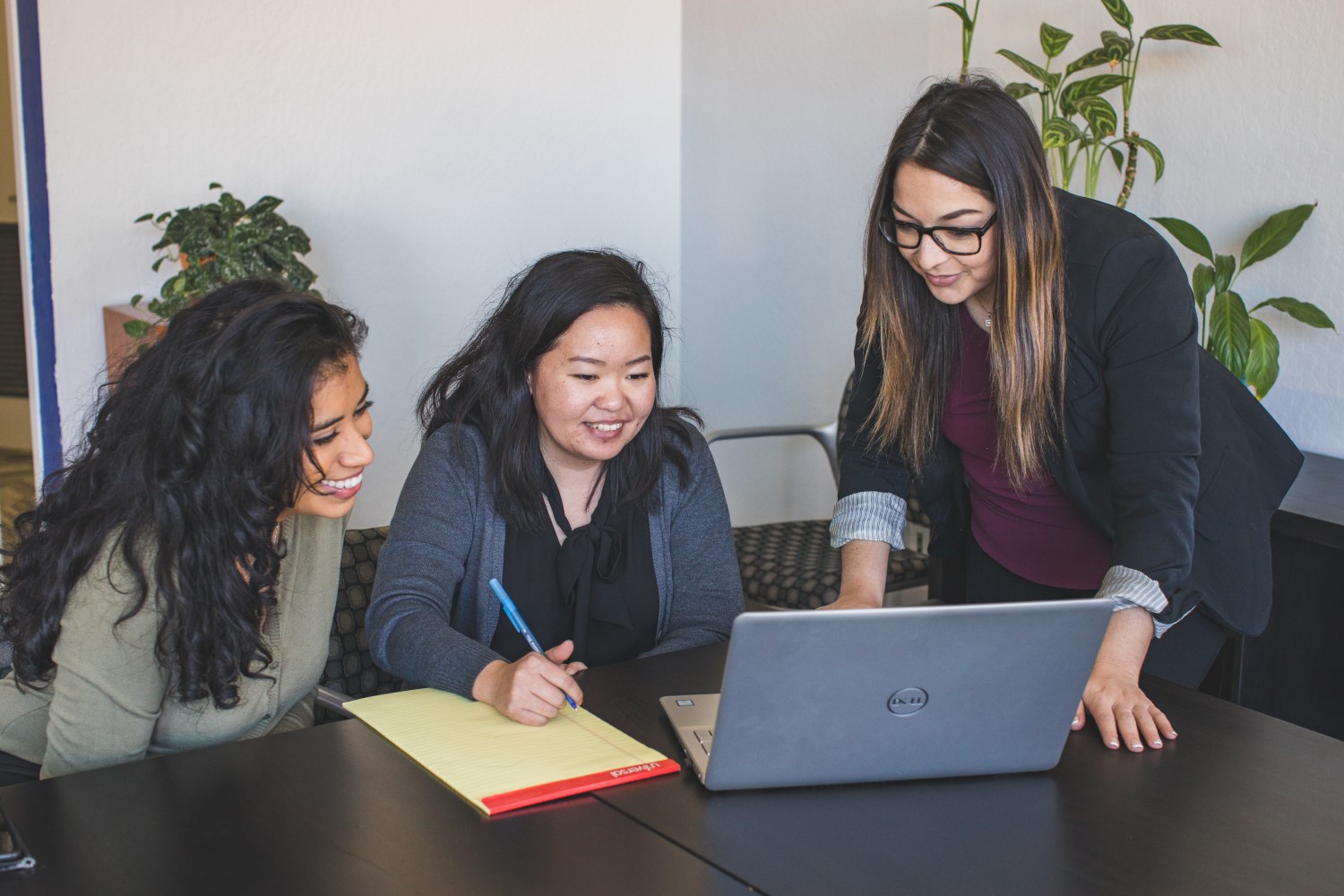
“It’s when you step out of your comfort zone that you begin to change, grow, and transform.” – Roy T. Bennett
It’s almost been two years since I’ve started at Valley Vision as a Project Associate, supporting the Healthy Communities portfolio and their first major statewide project. This project, Listos California, was initiated by Governor Newsom to prepare diverse and vulnerable Californians in emergency preparedness activities – including COVID-19.
I took a leap of faith to dive into the field of emergency preparedness that was beyond my initial career path. However, it was the core mission of the project to have a people-centered approach to help diverse populations that drew me in.
With our small but mighty team at Valley Vision, a strong team of consultants, hundreds of passionate community-based organizations and vendors across the state, and two visionary Listos California Co-Chairs with their own small but mighty team spearheading this effort, we surpassed the goal of preparing 1 million Californians for natural disasters and have, instead, reached 2.4 million Californians to education and engage on emergency preparedness for fire, earthquake, and more. We also overcame the pandemic by pivoting our strategies and adapting to the current turn of reality in the middle of it all.
As with each milestone comes reflections and lessons learned as it is essential to growth. Below are three key takeaways that I’ve gained to embrace change and hope this would be beneficial for those who are also on this journey of transformation at any point of their lives – while recognizing that this is easier said than done:
- Change is inevitable. The only thing that is predictable about change is that it will always be there (I know, the irony!). By accepting this, you release yourself from self-doubt.
- “Be formless, shapeless – like water.” – Bruce Lee. There are some events that are not controllable nor predictable and, quite frankly, sometimes flowing with the waves is easier than going against the currents.
- Give yourself compassion. You could be your own worst critic. If you’re learning something new, don’t beat yourself up for not perfecting it immediately. It takes time so please do forgive yourself.
As the project was wrapping up, I am pursuing an opportunity that fits my interests and next-step plans for career growth. My new position will give me the opportunity to work directly with small minority businesses to support their success.
Overall, I’m grateful for Valley Vision for the leap of faith in trusting me with the opportunity to support this work. If it weren’t for Valley Vision’s belief in me, I wouldn’t be poised for my next adventure. Valley Vision provided ample space to contribute my thoughts, be valued, learn from mistakes, and welcome any questions that I may have. I’d like to thank staff members who have been very supportive. To highlight a few, I’m thankful for Grace Kaufman and Kari MacDonald for being my cheerleaders on the field. I have Evan Schmidt’s words of encouragement readily in the forefront of my mind that I did the best I can today and can always do better the next day. Ultimately, there are no words that could express my deepest respect and appreciation for Alan Lange, deliberately managing the project with a calm and even-keeled hand that supported us all.
This is by no means goodbye to everyone I have engaged and connected with while at Valley Vision, but an ‘until next time’ or ‘see you later.’
The camaraderie developed during these past two years will never be forgotten and I know, going into my next experience, I will bring that camaraderie along with all that I’ve learned – launching into it more prepared and more resilient than ever.
Take care.
Houa Vang was a Project Associate supporting the Listos California project and Valley Vision’s Healthy Communities Impact Area.
Connecting Community and Data: COVID-19 Resilience Poll and Empower Yolo
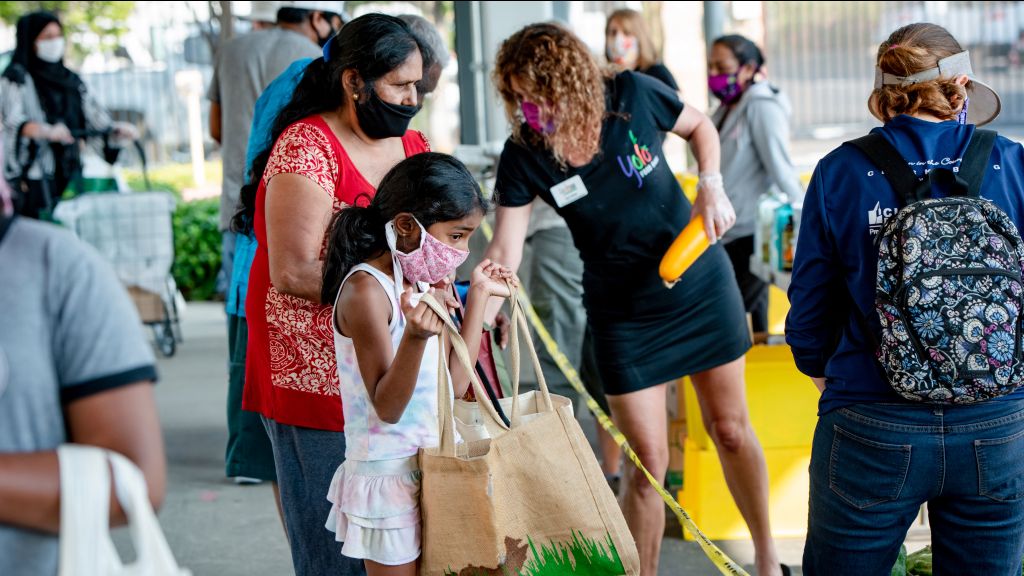
This piece was adapted from an article co-written by Evan Schmidt and Natalia Baltazar, Empower Yolo, published in the Davis Enterprise and the Empower Yolo website on March 6, 2021.
The pandemic has impacted every facet of life over the last year. With people increasingly at home and more isolated, domestic violence and substance use, as well as depression and anxiety are peaking in communities across the nation and our region.
To understand how COVID-19 has impacted our region over the last year, Valley Vision and Capital Public Radio in partnership with the Institute of Social Research at Sacramento State, have conducted The COVID-19 Resilience Poll. This is a public opinion poll that tracks experiences and perspectives on the impacts of COVID-19 in the Capital region, including Yolo, Sacramento, El Dorado, Placer, Yuba and Sutter counties, and is both demographically representative and statistically significant. The poll shows that physical safety at home and mental health effects of COVID-19 are significant and impact people of color, younger people, and women most significantly.
“In Yolo County Empower Yolo continues to support an influx of clients with increased domestic violence cases; clients needing help with basic necessities as well as emergency relief support to help pay rent, utilities and childcare. Over the past year, Empower Yolo’s restraining order clinic has been busier than ever. Many clients are struggling to provide basic needs for their families such as food, clothing and the ability to pay their rent and utilities. The need for childcare so that clients can go back to work is a real problem for working parents. We continue to work with community partners like the Yolo Food Bank to meet the huge rise in food distribution for vulnerable families, seniors, and the immigrant community,” says Lynnette Irlmeier, Executive Director, Empower Yolo.
Overall, a quarter of respondents (25%) from the poll are concerned about being physically or emotionally harmed by other members of their household. About a third of respondents are concerned about alcohol or substance abuse (34%) and the well being of children in the household (32%). As many as 63% of respondents reported feeling depressed at least once in the last seven days, and 82% of respondents reported feeling anxious at least once in the last seven days. These health impacts also continue to reflect different experiences in different communities.
Communities that were already on the margins and struggling due to systemic racism and oppression are hit the hardest due to increased daily stressors like a loss of job, homeschooling, or the inability to provide basic needs like food, clothing or paying rent.
“Most of the clients I work with every day are strong individuals,” says Josie Enriquez, Program Manager, Empower Yolo. “One of our clients was working in a restaurant and was laid off due to COVID. She spent all of her savings, but refused to get help because she is undocumented. Her brother has been helping her pay rent. She is also a survivor of domestic violence,” says Enriquez.
Some families have to rely on older children to help out with childcare when they have to work. “Low-income children are the ones suffering the most; many of the older children need to attend school, but they are also taking care of their siblings,” says, Enriquez.
Families that become sick need extra support to get back on their feet. “One of my clients had COVID and he had to quarantine. The entire family had COVID except for their 5-year-old daughter who was asymptomatic. His daughter was not able to participate in distance learning until we connected him with the local school district for support. He ended up staying home for about two months because the symptoms were severe. He had heart problems and anxiety on top of the regular COVID symptoms. Because he was home during this time to recover, he was able to support his daughter in virtual learning and she made progress. Empower Yolo also referred the family to STEAC, and is assisting the family in completing their tax return,” says Enriquez.
Women and younger respondents experienced more anxiety, depression, and hopelessness compared to other respondents. Eighty-nine percent of women and 93% of respondents aged 18-39 reported anxiety in the last seven days compared to 81% of overall respondents. Seventy-one percent of women and 82% of respondents aged 18-39 reported experiencing depression or hopelessness in the prior seven days compared to 65% of respondents overall.
Empower Yolo’s counseling department has been very busy throughout the pandemic trying to support clients’ various mental health needs. “Therapists are reporting seeing more clients than ever before; we are seeing a much higher rate of clients being depressed or anxious as a result of the pandemic,” says Amy Groven, Director of Clinical Programs, Empower Yolo. Depression and anxiety seem to impede many clients on things like getting a job so they can escape abuse. Because of quarantine clients are more isolated. “Clients are not reaching out to the support they do have as much, and many are experiencing feelings of being helpless or very lonely as they go through the pandemic trying to navigate a new life for themselves,” says Groven.
Respondents’ answers to open-ended questions further demonstrate the ways in which the COVID-19 pandemic is taking its toll. When asked how it is impacting them the most, 49% of respondents felt it most acutely in their routines, including a loss of social connection with community or church, followed by travel cancellations, loss of entertainment, and loss of normal services.
“We have seen younger people coming in with depression and anxiety, which is nothing new. Most of our clients have those diagnoses because of what they have endured. The pandemic has only compounded these issues, making it difficult for youths to socialize and build self esteem because there aren’t those normal things to do that are regularly built into their lives (like school, sports, scouts, etc.) that they gain mastery through. Now we are seeing youths who have endured trauma and have lost those things to cling to that inspire hope and resiliency,” says Groven.
Empower Yolo provides comprehensive services to survivors of domestic violence, sexual assault, human trafficking and child abuse. Core services include a 24-hour crisis line, emergency shelter, legal advocacy, and counseling. Legal services include restraining order clinics throughout Yolo County, family legal clinic, and child support appointments. The emergency safe house continues to support survivors of abuse and their families and pets including running two virtual classrooms for the children residing at the shelter. Throughout the pandemic shelter staff have worked through the challenges of keeping clients and their families safe and healthy while living in a communal living situation. The work of Empower Yolo, and other social services across the region, is critical to meet community needs during this difficult time.
Valley Vision is proud to partner with Empower Yolo to shed light on the challenges and the resilience in our communities and tell the stories behind the number of the COVID-19 Resilience Poll. You can support Empower Yolo and learn more about their services here. Working together, we can rebuild our community to be safer, healthier and more resilient.
Last year, Valley Vision partnered with Capital Public Radio and Sacramento State’s Institute for Social Research to launch the COVID-19 Resilience Poll series consisting of three Polls. These polls are helping us understand and navigate the challenges ahead as we aim to not just understand the impacts and recover from the setbacks of COVID-19, but also reimagine a more equitable, sustainable, and just future.
To keep up with Valley Vision’s work to advance livability in the Sacramento region, subscribe to our Vantage Point email newsletter!
Evan Schmidt is Valley Vision’s Chief Executive Officer.
Improving Air Quality in North Sacramento and Oak Park
Across the Sacramento region, community leaders and organizations are collaborating to achieve Environmental Justice, defined by local advocates as “the basic right of people to live, work, go to school, play, and pray in a safe, healthy, and clean environment.” Valley Vision is excited to be part of these efforts as we advance a new project to improve air quality in two frontline communities in Sacramento County.
Much of this momentum can be attributed to recent action at the State level. In 2017, Assembly Bill 617 was signed into law, which created the Community Air Protection Program run by the California Air Resources Board (CARB). The Community Air Protection Program empowers California’s most polluted communities to monitor their air quality and guide investments to reduce harmful emissions and improve public health in frontline neighborhoods. Valley Vision has been active in AB 617 advocacy since the legislation was signed by Governor Brown in 2017, including a strong effort in early 2018 to ensure Sacramento’s inclusion in the program, but more recently our work took on a new and critical purpose.
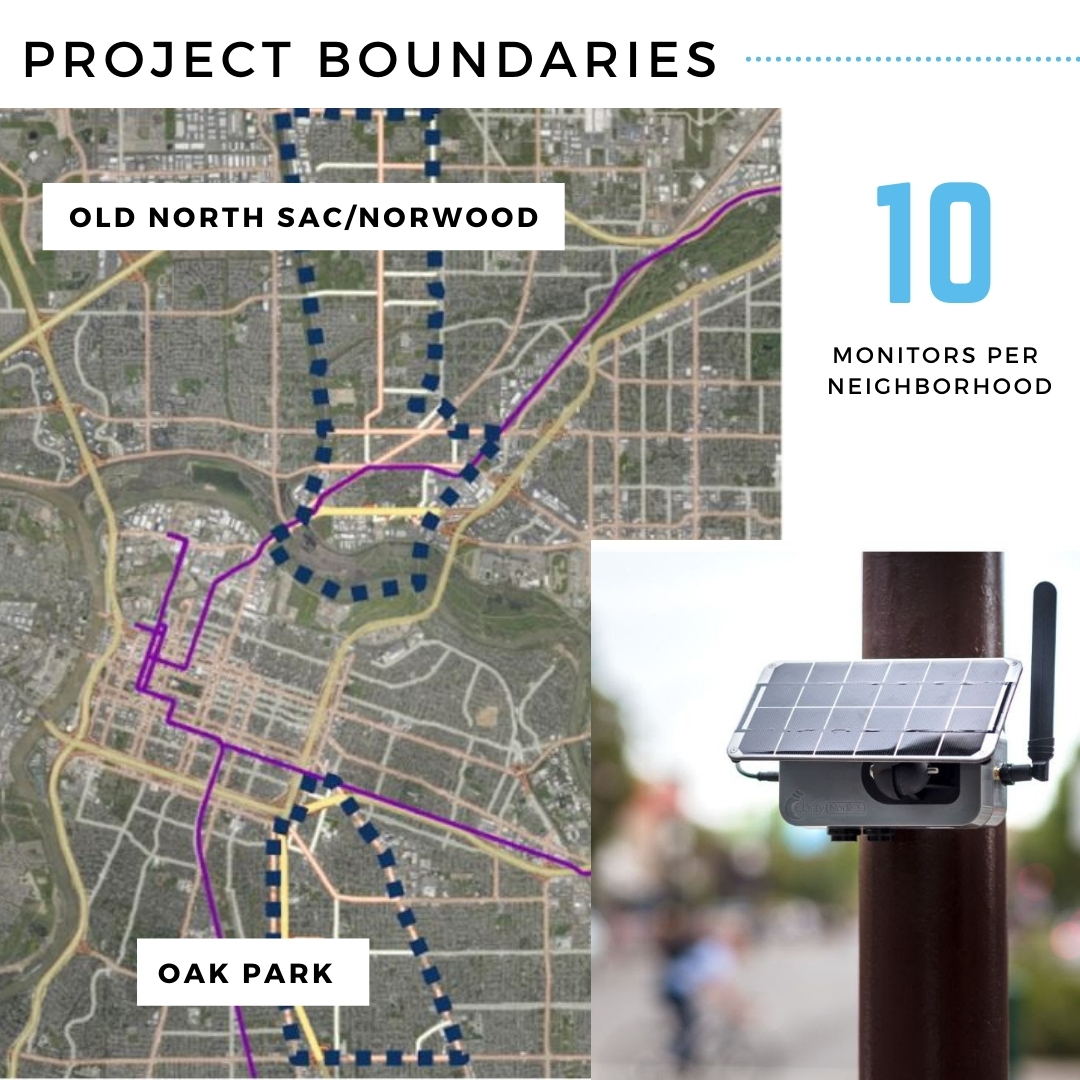
The work is focused on North Sacramento and Oak Park.
Last year, CARB awarded a two-year Community Air Grant to a group of local nonprofit organizations – Valley Vision, WALKSacramento, Breathe CA Sacramento Region, and Green Tech Education – to help the North Sacramento/Norwood and Oak Park neighborhoods monitor their air, understand how air quality impacts health, and develop a plan to reduce exposure to air pollution. Both of these communities are formerly redlined and underinvested air monitoring “deserts” with little available pollution data, and both have been nominated by the Sac Metro Air District for formal consideration by CARB as priority communities for pollution reduction programs.
The purpose of AB 617 is to empower communities to identify their own solutions in achieving better air quality, and our project centers on supplying the tools and resources for residents to do just that. To this end, our work is guided by a Project Advisory Committee (PAC) of 13 community members and technical experts. A majority of PAC members are eligible to be paid for their participation – a best practice for those seeking meaningful community engagement. You can learn more about the PAC on the project web page.
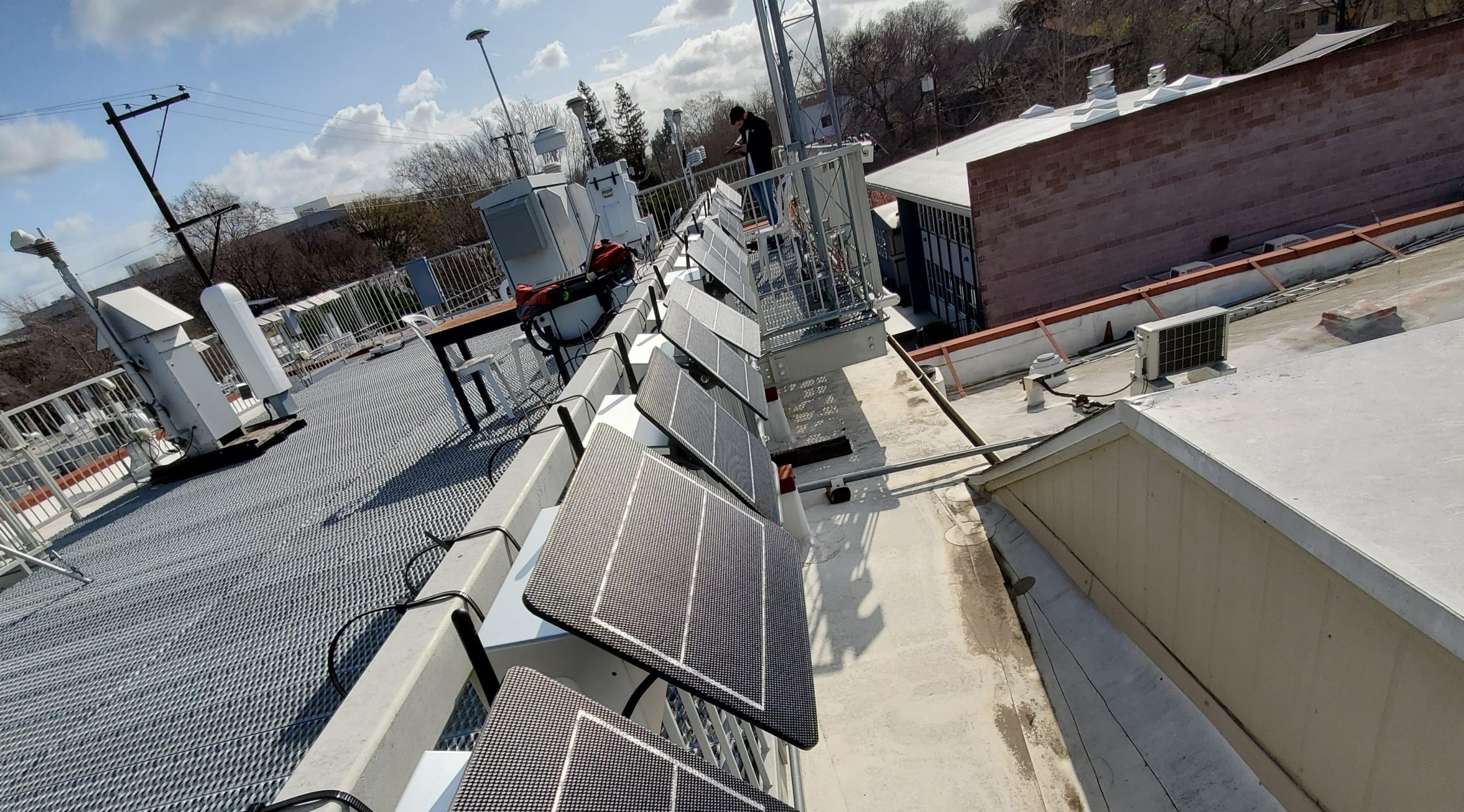
Our next major milestone is placing 20 Clarity Node-S air monitors (10 in each neighborhood) in locations determined by residents, and creating a public data portal where people can access real-time emissions information. Led by WALKSacramento, the team has already hosted four public listening sessions to seek community input, with live translation offered in Spanish, Vietnamese, and Hmong, and put out a multilingual survey to gather information from residents about priority locations for the air monitors to be placed. We are currently working with our PAC to review the dozens of applications that came in from both neighborhoods to determine which residents are eligible and interested in making these important siting decisions. Of course, residents who participate are being offered stipends of $75 per meeting attended.
The work of Sacramento Neighborhoods Activating on Air Quality will last through March 2022, with the following milestones:

As you can see, we’ve got our work cut out for us. Once the two air monitoring networks are deployed in locations determined by residents, we are funded to continue working with community members on an educational curriculum to ensure shared understanding of air quality and its effects on public health, further community workshops and planning efforts to identify community-led solutions, a Hackathon to begin to develop technological tools, and finally a Community Air Action Plan which can be elevated to the CA Air Resources Board to secure resources and to enforce new rules in line with community priorities.
Overall, we believe that the resources and tools that we are bringing to the table will help residents move the needle on public health in our region’s frontline neighborhoods. Especially in the age of COVID-19, it is absolutely critical that we address environmental and health disparities by empowering communities with real decision-making power, and do it in a transparent and equitable manner.
If you have any feedback to share or are interested in partnering in this work, please reach out by emailing adrian.rehn@valleyvision.org! To stay up to date with our work to improve regional air quality, subscribe to Valley Vision’s “Cleaner Air News” email newsletter!
Adrian Rehn is a Valley Vision Project Leader overseeing the Cleaner Air Partnership, Sacramento Neighborhoods Activating on Air Quality, and Valley Vision’s online communications.
Until We Meet Again
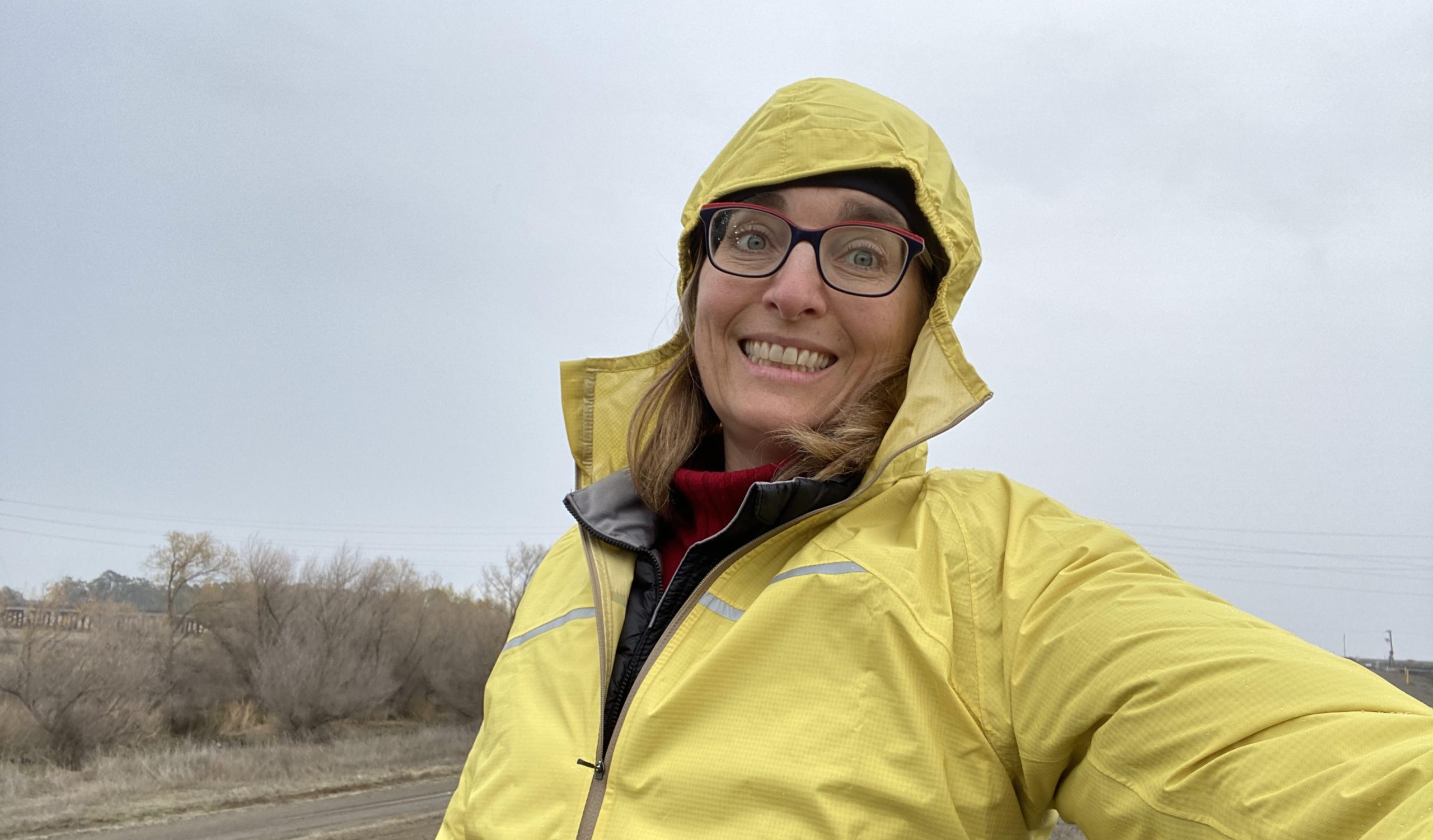
The farewell blog post is a Valley Vision tradition – and a daunting one, now that I’m faced with it myself. My work with Valley Vision, which ends on Friday, includes the last six-and-a-half years as a consultant and employee as well as the decade prior to that (back to about 2004) working as a partner with Valley Vision while at UC Davis and SARTA — spanning, altogether, more than fifteen of the organization’s twenty-five-plus years. How to bid all that work, and all the friends and colleagues I’ve made, farewell in a short blog?
Perhaps by noting that it’s about the work. When we’re fortunate in the work we do, it becomes the embodiment of mission and purpose, and gives meaning to our days – which is what drives us all, at both the individual and the organizational levels, whether in for-profit, not-for-profit, or public service. It’s important to be true to the work. In my two decades here, I’ve done work that’s focused on supporting tech startup companies and the vital contributions of the innovation economy to any region’s economic health and resilience, and I’ve also done work focused on bringing a range of perspectives together around the tough, contentious challenges facing our region. I have been so fortunate to find meaning, purpose, challenge, and reward in all of that work.
And by adding that of course it’s also about the people. The work is only possible because people do it. People show up every day, working mostly together and sometimes at cross purposes; mostly with decent communication and sometimes without; hopefully (but not always) from a basis of trust and with the understanding that everyone is trying to do the best she or he can. And through all that, we understand each other, build friendships, and have fun with each other while also occasionally becoming frustrated by each other. The two decades I’ve been in the Capital Region are the longest I’ve lived anywhere, and all the lines in my life have blurred: my work colleagues have become personal friends; my parent friends have become work friends, my “Davis” friends have become “Capital region” friends, and more. As an introvert and someone who entered working life with bright lines between “work” and “personal,” the blurring of those boundaries has sometimes felt awkward, and has without exception been rewarding.
It’s also about the partnerships. In my experience, when people build partnerships in order to get the work done, the work gets done better. Within a single organization or between several, the ability to find common ground, build a shared agenda, understand what you can each contribute to reaching the goal, and then work together from a basis of trust to do that, while keeping a lid on politics, competition and divisiveness — that’s the sweet spot. That’s the spot I’ve been fortunate to find so often in my work here, whether with Valley Vision, in my own consulting, at SARTA, or at UC Davis. It’s the sweet spot I look forward to continuing to find in what’s ahead.
These are some of the things I’ll take with me when I go, and for which I’m grateful to all my colleagues and friends over all of these years.
So, where am I going, anyway? Thanks to luck, timing, and the ability to leverage so much of what I’ve done and learned in the Capital Region in these years, I’m moving on to become the Senior Vice President of Market Transformation at the Los Angeles Cleantech Incubator (LACI). I’ll help to advance and accelerate the development and deployment of clean technologies of all types, with an emphasis on transportation, energy, and sustainable cities. This new role is exciting because it’s a chance to “live my values” and focus my professional energies on the climate crisis as I’ve hoped to do. It’s also exciting because it joins my prior work with startups and innovation in my SARTA and UC Davis years with my recent work with multi-sector partnerships and policy levers in my Valley Vision years.
So in the end, even though my new work won’t be in this region, I’m only able to do it because of this region. And Valley Vision — its mission, team, Board, regional partners — is where so much of the work, people, and partnerships of these two decades has been centered. To all my Valley Vision colleagues and partners over the years, thank you for so many opportunities, and for all your efforts, wisdom, and friendship.
Meg Arnold has served in several roles during her years at Valley Vision – most recently as Strategic Advisor. She can be reached at meg@gsdconsulting.net.
The Latest on Broadband Coverage in the Capital Region

In November 2020, the California Public Utilities Commission (CPUC) released the latest broadband availability data that reflect broadband coverage in California as of December 2019. This blog will present an overview of the broadband coverage in the Connected Capital Area Broadband Consortium (CCABC) Region, and in the four counties (Sacramento, Sutter, Yolo and Yuba), based on the following speed standards:
- 6/1 Mbps (megabits per second): Current California standard (AB1665).
- 25/3 Mbps: FCC standard. Minimum recommended in a previous blog for households using video conference applications for education or work, and/or having multiple simultaneous users at home.
- 100/20 Mbps: Goal set in the Governor’s Executive Order and the California Broadband 4 All Action Plan.
- 1Gbps/500Mbps: FCC Gigabit service standard.
Based on these standards, the table below presents the coverage and percentage of served and unserved households. At the standard of 6/1 Mbps, the region is at 97.4% coverage (around 17,000 unserved households) which is close to the goal of 98% broadband access in California and in each consortium region. Sacramento has the highest coverage, 97.7%, followed by Sutter, 97%, Yolo, 96.4%, and Yuba, 94.7%. For the 25/3 Mbps standard, the figures are slightly below, achieving a 96.9% in the region (around 20,000 unserved households). At the 100/20 Mbps standard, the regional coverage turns into 93.2%, increasing the number of unserved households to around 44,000. For these three standards, regional coverage is comfortably above 90% coverage, however, for the Gigabit standard, the regional coverage dramatically drops to 22.5% or half a million unserved households.

The figure below shows the layered coverage at the speed standards mentioned above. The higher speeds coverage, 100/20 Mbps and Gigabit (in blue and gray, respectively), is mostly in main urban and densely populated areas across the region. Speeds of 6/1 Mbps and 25/3 Mbps (in light blue and green, respectively) are also available in these areas, and additionally, in suburban and some rural areas. Areas unserved at 6/1 Mbps or with no service are mostly scattered across rural areas across the four counties.
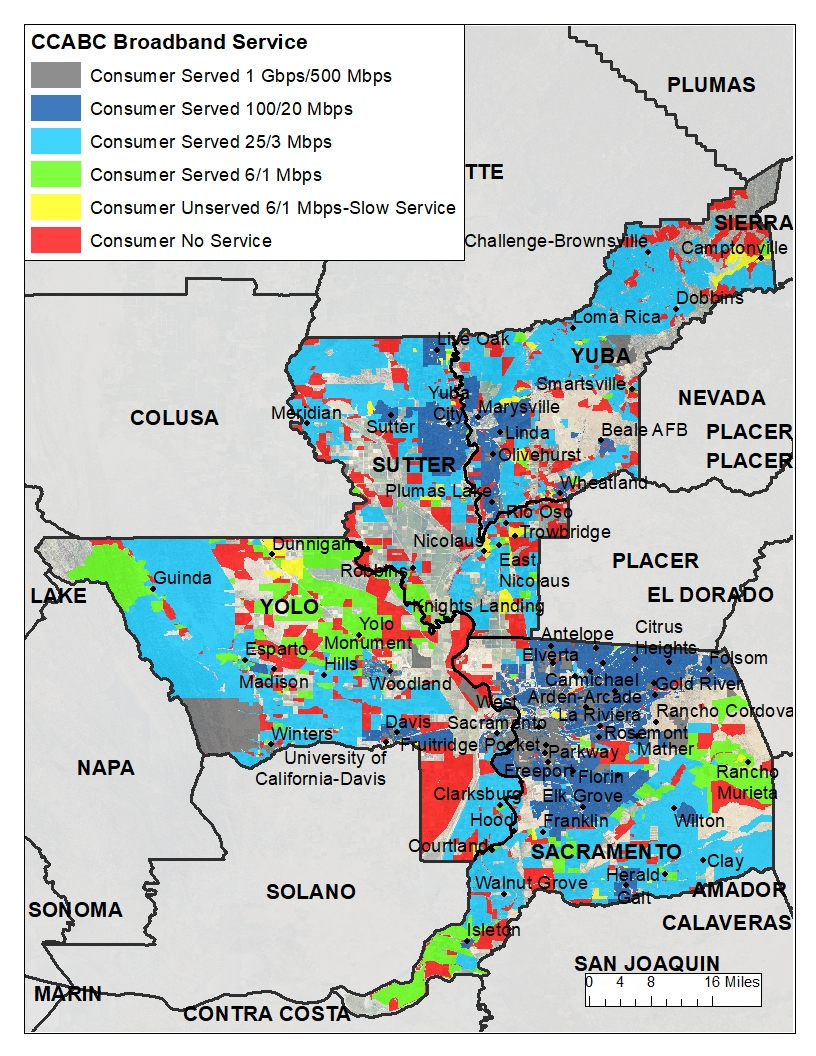
The table and figure below present the broadband coverage by four technologies widely used to provide internet service: DSL, Cable Modem, Fiber to the location (FTTx), and fixed wireless (unlicensed and licensed). Cable Modem has the highest coverage in the region, 94%, and in each of the four counties, followed by legacy DSL, 76%. FTTx achieves a regional presence of around 35%, followed by fixed wireless, 4%. It is important to note that in the figure below, fixed wireless shows the largest footprint in the region, however, this coverage is mostly in less densely populated rural areas. As a result, fixed wireless covers less number of households than the other technologies.
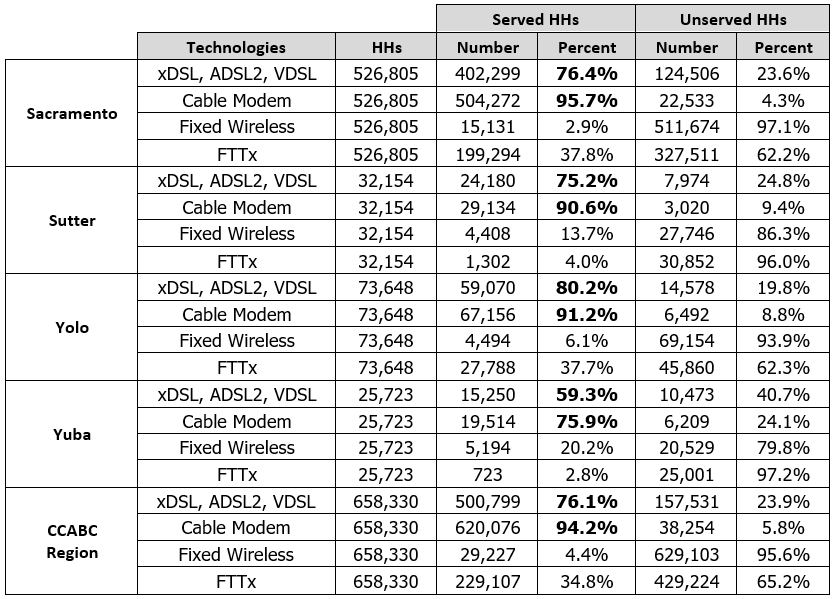
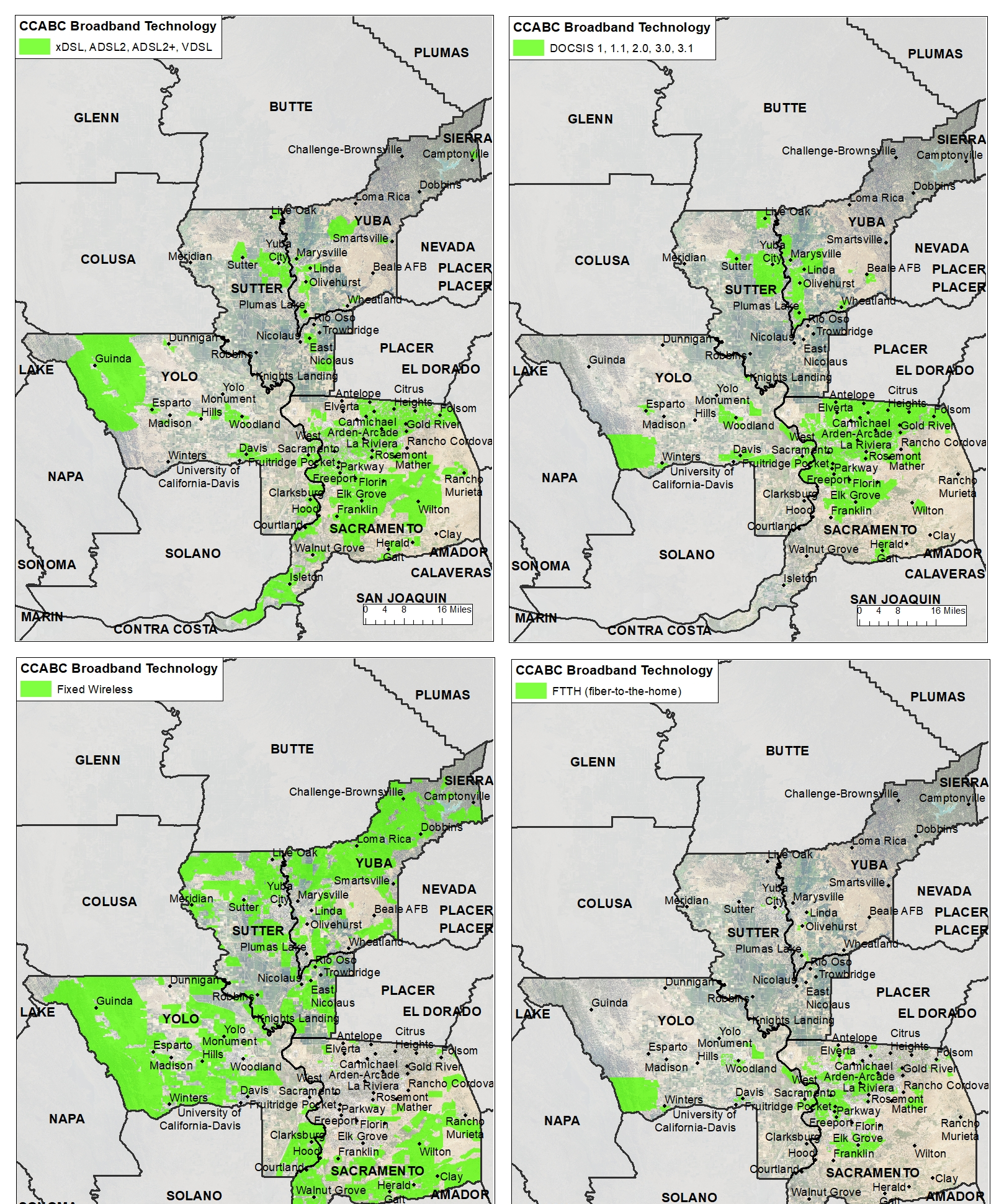
It is important to note that the CPUC broadband availability data is self-reported from ISPs and telecom companies. Many local broadband stakeholders (local governments, communities, residents, and other ISPs) have expressed concerns that some of the data do not reflect what is actually available. For those cases, the CPUC has implemented several validation methods which can be found here. The CCABC recommends internet users to download and run the CalSPEED app (calspeed.org) in order to validate broadband coverage and speeds in the region. In conclusion, these latest CPUC broadband availability figures show that, based on the California 6/1 Mbps standard, our consortium region is still below the 98% availability for households. For the other standards, availability continues dropping to near 93% for 100/20 Mbps, and 22% for an ideal Gigabit service.
This 2021, the Connected Capital Area Broadband Consortium (CCABC) looks forward to continuing working with all broadband stakeholders to get closer to the goal of achieving ubiquitous reliable high-speed and affordable broadband internet for all.
To continue staying up to date with all of the region’s broadband efforts, subscribe to Valley Vision’s e-Connect email newsletter!
David Espinoza is a former Valley Vision Project Leader who managed broadband projects and other initiatives in the Innovation & Infrastructure impact area.
“This Is Not Goodbye, But Thank You”
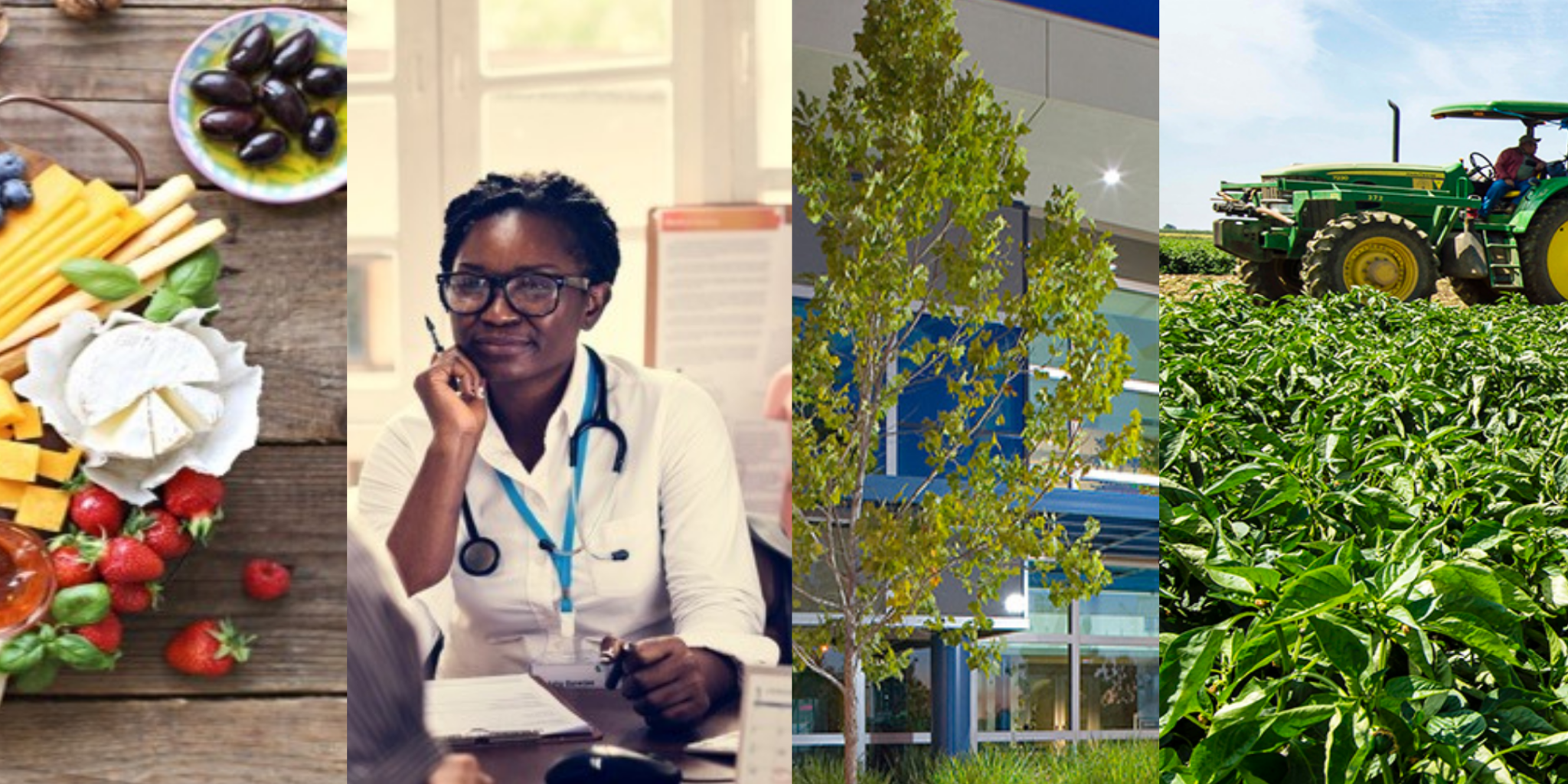
Being a part of Valley Vision was a turning point in my career. I have waded through non-profit jobs for most of my professional life, picking up different roles every year, finding new ways to expand my skills, but nothing ever felt “right.” After graduating from college, like many young adults, the degree that I spent so many years working to achieve, I thought, was a ticket to that “grown-up job.” The problem was, I had no idea what I wanted to do or what I was genuinely passionate about pursuing. I had spent so much time working to finish my education, I forgot to plan for the rest of my post-academic life.
As I floated in and out of the professional world, I juggled my interest in food systems, agriculture, and community development, trying to find ways to apply all this information I had in my brain to constructive use. I dabbled in the restaurant industry, farmer’s markets, marketing, event planning, university institutions, but nothing seemed to ever fit. Finding Valley Vision was like finding the light at the end of very long tunnel. This was an organization that had not just a fantastic reputation in civic engagement – and food systems – but had a leadership interested in developing and engaging with young professionals. I finally was in a space where I was treated as a qualified individual, and not as a nuisance, but a respected colleague.
Over the last three years, I was given opportunities far beyond what I ever expected, from managing the Farm to Fork Steering Committee to producing conferences like Future Focus to planning and organizing Valley Vision’s 25th Anniversary event. I engaged with regional and national leadership, developed real genuine relationships, had a voice at the table to help solve critical issues, helped provide solutions to issues I was passionate about, and learned about challenges facing communities not just here in the region, but throughout California.
I do not consider my departure from Valley Vision an ending. That is not the Valley Vision Way. Not only will the professional education I was afforded be long lasting, but the relationships built among my mentors and colleagues will be for a lifetime. I probably can never express how much appreciation I have for my time at Valley Vision, but I know that it is because of Valley Vision, its employees, its mission, and culture, that I have the confidence to move forward into this next chapter.
Emma Koefoed was a Valley Vision Project Manager staffing the Food & Agriculture Impact Area and leading Valley Vision event planning from 2017 until the end of 2020. She is the new Manager of Communications & Marketing at the SMUD Museum of Science & Curiosity.
2021: A Time for Courageous Action

January is often when we make predictions for what is to come in the new year. But, if 2020 taught us anything, it is that we are living in an unpredictable world. And given the tumultuous start to 2021, it is likely we won’t be sailing through smooth waters.
With upcoming transfers of leadership, still-record-breaking COVID-19 infection rates, an aggressive national vaccine roll out needed, and with economic recovery and the need for climate resilience at the forefront, we know the 2021 waters will be choppy. Throughout 2020 we talked about the need to reimagine systems that are resilient and equitable. Without courage to take on hard things and focus on tackling complex problems together, we will come out the other side of the pandemic only to recreate inequitable systems that don’t meet the needs of all and can’t adapt to rapid changes that occur in our modern world. Here are some foundational questions and bold ideas from outside our region to inspire us in 2021.
Economic Insecurity
Almost a year into the pandemic, our nation has lost tens of millions of jobs and while there will likely be additional support for small businesses with a new administration, economists have braced us for a slow recovery. Further, with rapidly accelerating changes to our economy and workplaces, many of the lost jobs may be gone permanently. We must push forward innovative and equitable solutions to help people re-enter the labor market. How do we address the dual challenge of the pandemic’s impacts on the economy and the rapidly changing and digitizing workforce? The Aspen Institute has launched a partnership with Mastercard Center for Inclusive Growth to modernize the structure of worker benefits. The program, Benefits21, reimagines a 21st century worker benefits system that provides financial security to all, with a focus on inclusive, portable, people-centric, and interoperable benefits, including unemployment insurance, paid leave, training, and retirement. Additionally, mayors from around the nation are exploring how Universal Basic Income could be a part of a solution to pandemic response and economic insecurity in their communities. Finally, close to home, the Stanislaus Cradle to Career Partnership drives a highly collaborative and robust campaign approach to align institutions to ensure that every child has a path, plan, and a purpose.
Racial Equity
2020 laid bare long term racial inequities and generated an increased sense of urgency to act. How do we move forward with racial equity as a central and driving force in community initiatives? The California Strategic Growth Council is working in collaboration with the Public Health Institute to support the Capitol Collaborative on Race & Equity (CCORE) – a racial equity capacity-building program for California State employees. The program offers cohorts for participants to receive training to learn about, plan for, and implement activities that embed racial equity approaches into institutional culture, policies, and practices. McKinsey offered a data report looking at the role of coalitions in advancing racial equity and W.K. Kellogg Foundation in partnership with Lever for Change is seeking proposals to close the racial equity gap so all children, families and communities can be more confident, healthier and secure in their trust of the systems and institutions that serve them. Registration is due January 28th.
Digital Divide
2020 also made clear the necessity of digital access for all. Over 20 million people across the U.S. lack broadband access- yet connectivity is required for education, jobs, and basic services. How do we rapidly transition infrastructure and services to reflect an economy that requires full digital access? The City of San José, in partnership with the City of San José Mayor’s Office of Technology and Innovation, has engaged the California Emerging Technology Fund to establish the Digital Inclusion Partnership, a $24 million cross-sector fund that will be distributed in grant awards over a ten-year period. It is the city’s largest philanthropic effort in recent history and aims to provide universal connectivity and appropriate digital skills to 50,000 households. This robust effort is a public private partnership and in its first round of rounding will disperse $1M to organizations in San José who are closing the Digital Divide through expanding device access and digital literacy skills.
Housing and Homelessness
Homelessness continues to rise, with a new report from L.A. projecting homelessness doubling by 2023. Additionally, housing affordability challenges have only worsened in 2020 as income loss has occurred and while evictions were avoided, the weight of accumulated rent payments will hit many in 2021. What are the solutions that will help us launch and scale efforts to address housing affordability and homelessness? In Portland, Oregon, Mercy Corps created the Community Investment Trust (CIT) creating a fund that builds the possibility to strengthen communities and create empowered lives. The CIT offers a long-term path to collective, communal ownership of real-estate for investors starting from $10-$100 per month. In Vancouver, the charity Foundations for Social Change (FSC), in partnership with the University of British Columbia gave individuals experiencing homelessness $5,800 with no strings attached and saw very positive outcomes including the attainment of stable, long term housing and food security.
Climate Change
Another aspect of 2020 has been the opportunity to decrease commuting and spend more time in nature for many. Further, COVID-19 response has showed us that we can have the will to move quickly to enact policies and practices for the good of public health. How will we take the lessons of pandemic response and translate them into gains in climate response and resilience? Many cities are taking rapid approaches to increase active transportation, addressing climate change and responding to increased demand for safe walking and biking infrastructure. Paris has demonstrated that cities can go green fast and enact changes that go beyond the pandemic, and Stay Healthy Streets Seattle shows ways that bike lanes are being utilized in ways that improve health and environment.
Addressing these foundational questions for 2021 and learning about initiatives from outside our region inspires us to think differently, take action in new ways, build new types of partnerships, and advance bold solution sets about complex community problems.
Valley Vision supports livable communities in the Capital region by advancing economic prosperity, social equity, and environmental sustainability. We use actionable research, policy education and advocacy, collaboration, and program activation to advance our work. Some key priorities in 2021 will be: enacting a regional agenda for digital inclusion, supporting inclusive economic recovery and growth through Our Path Forward: The Prosperity Strategy, advancing climate resilience, and supporting decision-making with actionable research. Our next Vantage Point will include a focus on inspiring action being taken within our region – there have been a significant amount of that too!
What inspires you for 2021? Let us act courageously together to advance equity, prosperity, and sustainability in our region and in our communities.
To keep up with Valley Vision’s work to advance livability in the Sacramento region, subscribe to our Vantage Point email newsletter!
Evan Schmidt is Valley Vision’s Chief Executive Officer.
What Are You Hopeful for in 2021?

A year of deep challenges has come to an end, and a new year is upon us. Read on for thoughts and predictions that Valley Vision staff hope will come to pass in 2021:
Meg Arnold: “I’m hopeful for transitions: swiftly, to vaccines; smoothly, to the new administration; happily, back to seeing people in person without worry, and (on a personal note) successfully, for the four young adults in our home who will all be starting or resuming their four-year degree programs in the fall.”
Isa Avanceña: “I’m hopeful for opportunities for our communities to come back stronger than ever. It won’t be easy, but I believe our region has what it takes. I’m also looking forward to lots of in-person quality time with family and friends, especially in the second half of the year.”
Kari MacDonald: “I am hopeful that we spend 2021 remembering what is truly important: health, love, family, work-life balance, using technology for connection, and good books!”
Houa Vang: “I am hopeful for great prosperity in health, compassion, and growth for everyone in 2021.”
Grace Kaufman: “I’m hopeful for continued health, colorful sunrises and sunsets, new friendships, and quiet reflection.”
Alan Lange: “Globally, I’m hopeful that everyone will take time to fully appreciate the good things that are in their lives. Personally, I’m hopeful that the deluge of house projects I’ve been assigned by my boss (aka spouse) over the past few months will slow so I can have a free weekend (Love you, K!).”
Evan Schmidt: “I’m hopeful for a better 2021 than 2020! This includes: health and well-being for all, the opportunity to create systems and communities that are better than what came before, the ability to visit family that lives long distance, and to go to a fun party by the end of 2021!”
Trish Kelly: “That 2021 sees restored health; economic recovery and renewal that is truly inclusive, starts to remediate past injustices and structural disparities, and sees our region leading around environmental innovations. And that we will be able to see and hug loved ones.”
Renee John: “I am hopeful we will all be kinder to each other, think of each other first and ourselves less.”
Jesse Flores: “I’m hopeful for the opportunities to channel built-up energy and motivation from 2020 towards a more racially equitable Sacramento region.”
David Espinoza: “I am hopeful to continue witnessing high-quality and affordable internet service expanding across the region. I am hopeful for good health and unity in the country and the world. I am hopeful to become better acquainted with the beautiful and amazing Greater Sacramento Region and for new adventures here with my family. Live long and connected, and may the broadband be with you.”
Adrian Rehn: “I hope for a better and brighter 2021 where people’s basic needs are provided for.”
To keep up with Valley Vision’s work to advance livability in the Sacramento region, subscribe to our Vantage Point email newsletter!